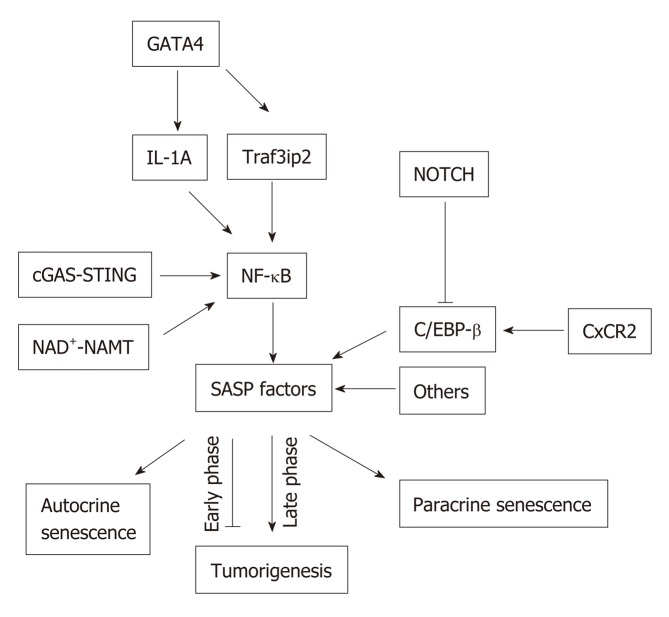Figure 2.
Senescence-associated secretory phenotype signaling pathways. Nuclear factor kappa light chain enhancer of activated B cells can be activated via multiple signaling pathways such as the GATA binding protein 4, cyclic GMP-AMP synthase-stimulator of interferon genes, and nicotinamide adenine dinucleotide -nicotinamide phosphoribosyltransferase NAD+-NAMT pathways, which lead to the expression of senescence-associated secretory phenotype (SASP) proteins. SASP can be positively regulated through C-X-C motif chemokine receptor 2, or negatively by NOTCH via CCAAT-enhancer-binding proteins. SASP can induce senescence in both autocrine and paracrine manners. SASP can be anti-tumorigenic in the early phase of senescence, but can be pro-tumorigenic in the late phase of senescence. NF-κB: Nuclear factor kappa light chain enhancer of activated B cells; GATA4: GATA binding protein 4; cGAS-STING: Cyclic GMP-AMP synthase-stimulator of interferon genes; SASP: Senescence-associated secretory phenotype; CXCR2: C-X-C motif chemokine receptor 2; C/EBP: CCAAT-enhancer-binding protein.

